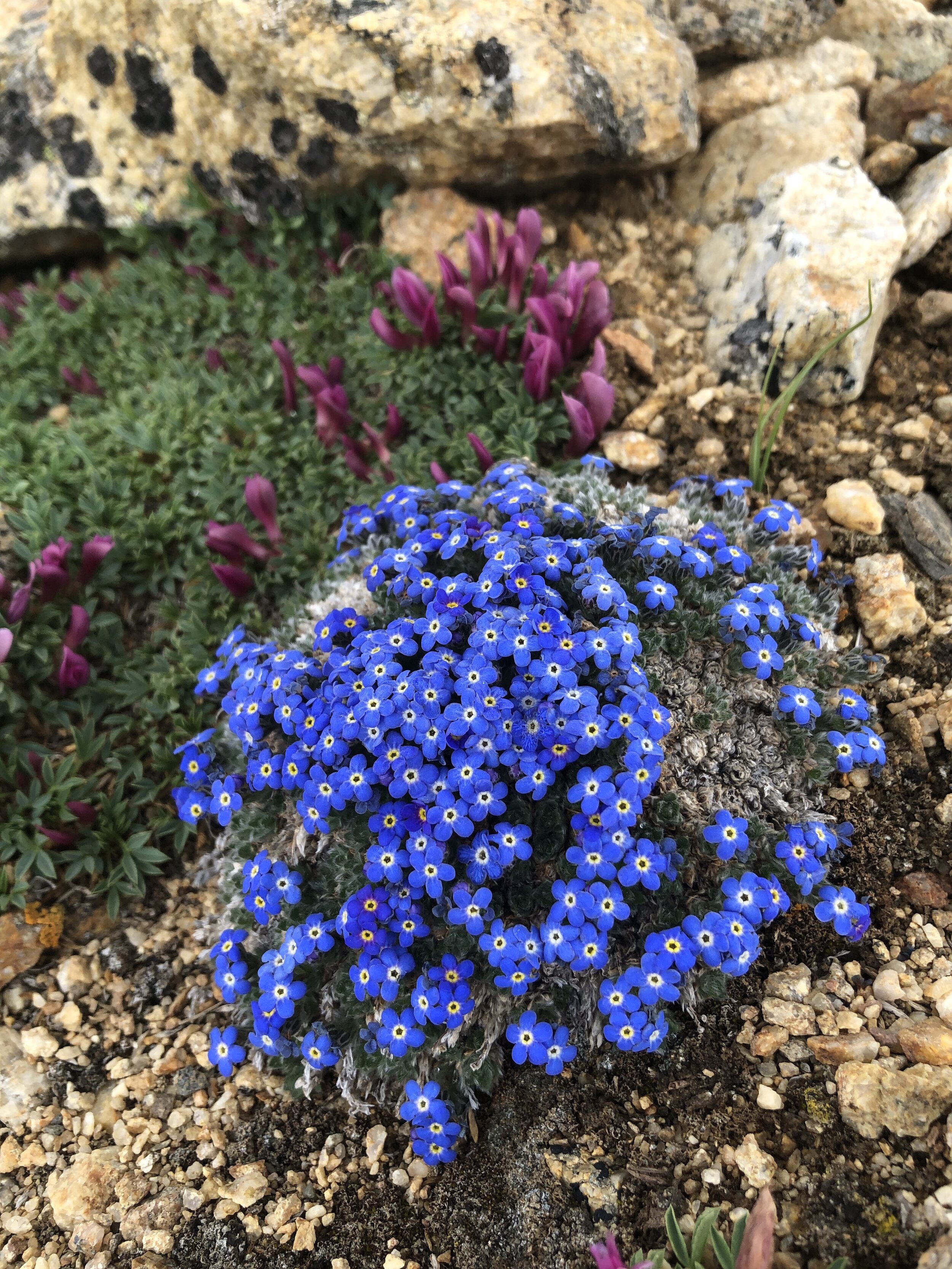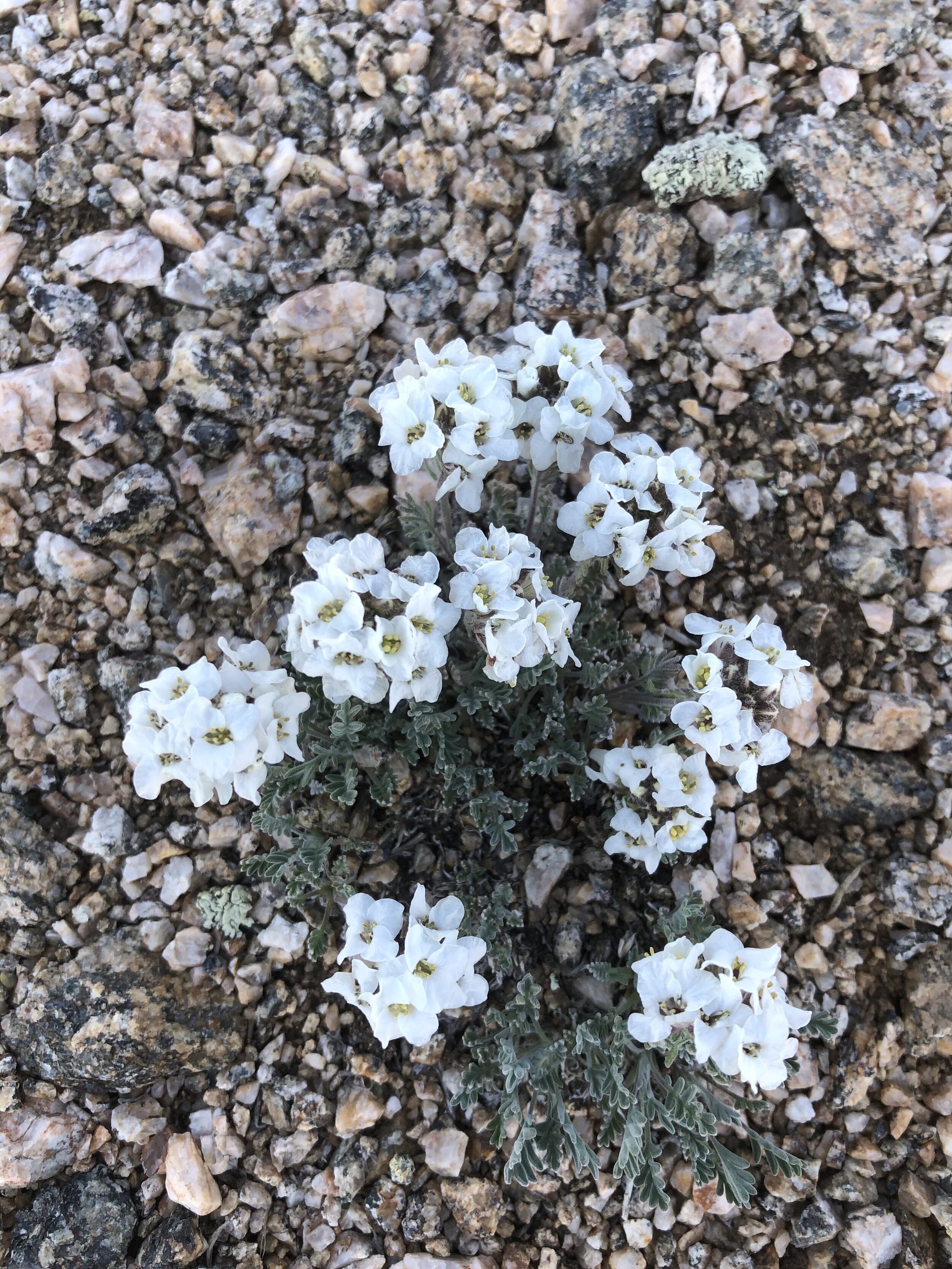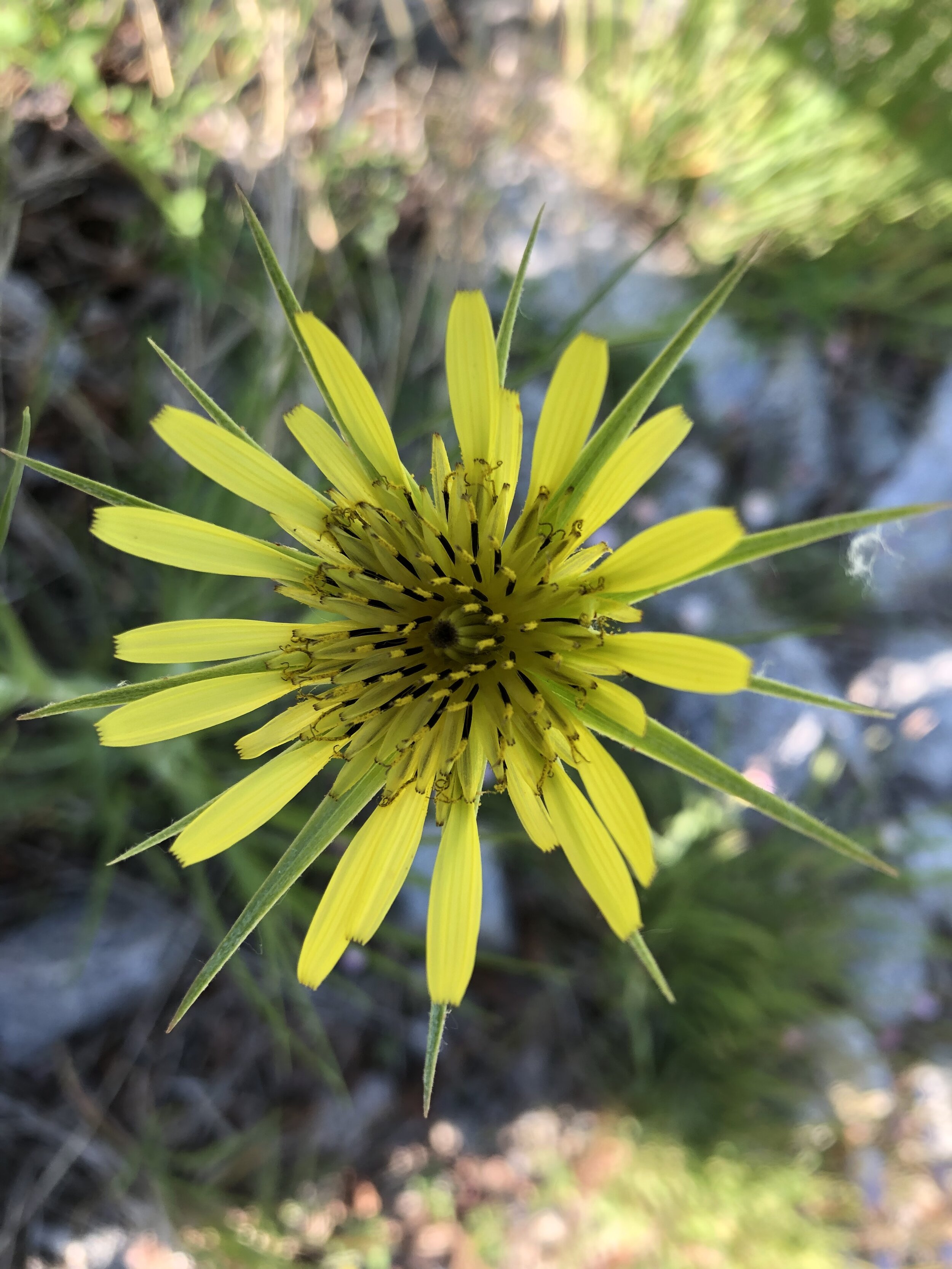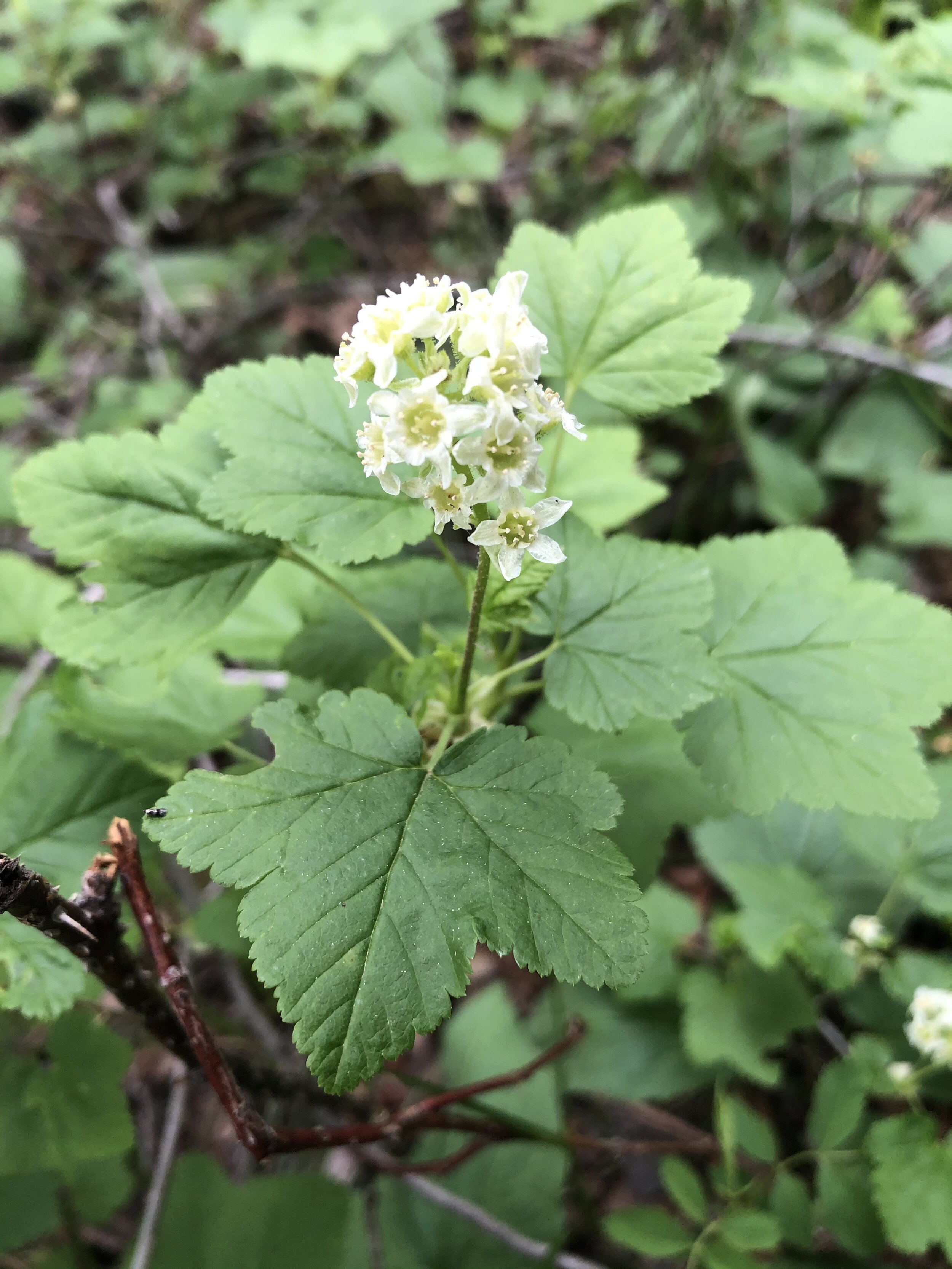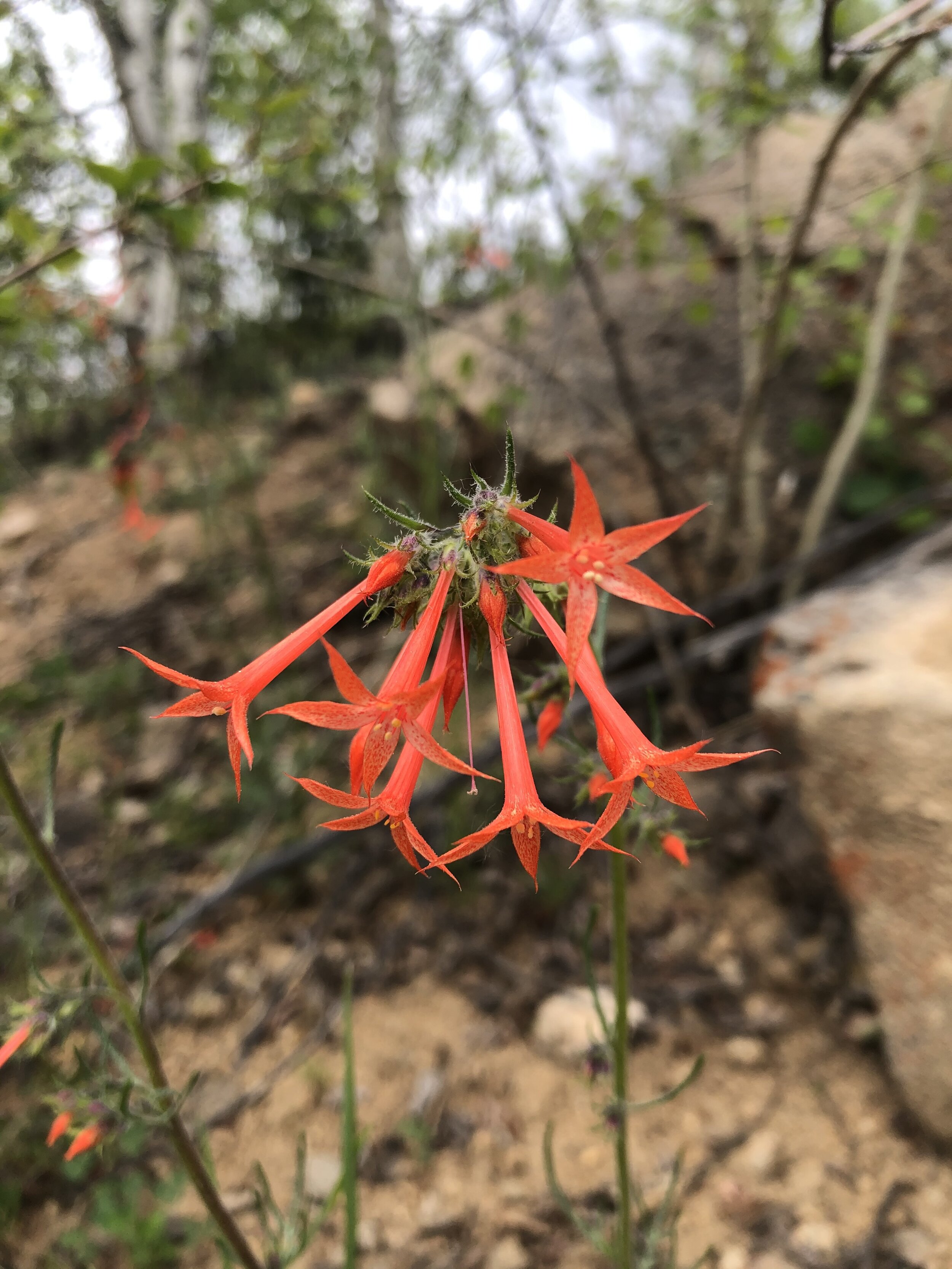Potentilla glaucophylla/diversifolia, June 8, 2021
P. diversifolia, Lackawanna, 11,400’, June 18, 2021
Common & scientific name
Blue-leaf cinquefoil, Potentilla glaucophylla/diversifolia
Family
Rose, Rosaceae
Location
Summit, 12,100’
Fun, weird, helpful, or little known fact
Here we go: welcome to the whacky world of Potentillas, or Cinquefoils, upwards of a dozen of which live on the Pass, all with similar looking yellow flowers (except the white P. arguta), all differentiated by their leaves.
Blue-leaf cinquefoil is very common in the subalpine and alpine on the Pass. It has 5 to 7 leaflets arranged palmately, like the fingers of a hand connected in the middle. The leaves are green, with a bluish tint, on both sides (with the backside a bit less blue-green, but neither side hairy). Its leaflets are serrate, or toothed, only on the upper part of the leaf, not the whole length of the leaf. Photo of leaf only to come!



















